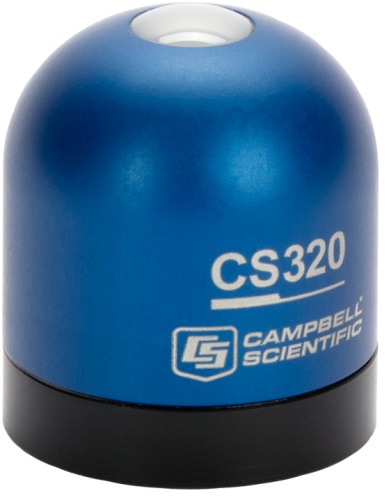
製品ライン
| ISO クラス | 測定範囲 | 感度 | 動作温度範囲 | |
|---|---|---|---|---|
CS320
|
クラス C (セカンドクラス) | 0 ~ 2000 W/m2 (純短波放射照度) | 0.057 mV/W/m2 | -50° ~ +60°C |
CS310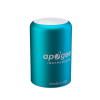
|
— | 0 ~ 4000 µmol m-2 s-1 | 0.01 mV/µmol m-2 s-1 | -40° ~ +70°C |
SR30-L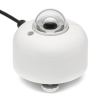
|
半球太陽放射: スペクトル的に平坦なクラス A (二次標準) ISO 9060:2018 | 半球太陽放射: 285 ~ 3000 x 10-9 m | 半球太陽放射: デジタル出力 | 半球太陽放射: -40 ~ +80°C (rated) |
CMP10-L
|
クラス A (二次標準) | 285 ~ 2800 nm | 7 ~ 14 µV/W/m2 | -40° ~ +80°C |
SMP10-L
|
クラス A (二次標準) | 285 ~ 2800 nm (50%ポイント) | 2 線式 RS-485 Modbus | -40° ~ +80°C |
その他製品
| ISO クラス | 測定範囲 | 感度 | 動作温度範囲 | |
|---|---|---|---|---|
SR05-L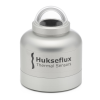
|
スペクトル的に平坦なクラス C (セカンドクラス) ISO 9060:2018 | 285 ~ 3000 x 10-9 m | — | -40° ~ +80°C |
SR20-D2-L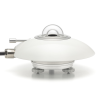
|
スペクトル的に平坦なクラス A (二次標準) 日射計 (ISO 9060:2018 ) |
|
デジタル出力 | -40° ~ +80°C |
MS-80SH-L
|
|
285 ~ 3000 nm | ~10 µV/W/m2 | -40° ~ +80°C |
MS-80-L
|
|
285 ~ 3000 nm | ~10 µV/W/m2 | -40° ~ +80°C |
CMP3-L
|
クラス C (セカンドクラス) | 300 ~ 2800 nm | 5 ~ 20 µV/W/m2 | -40° ~ +80°C |
CMP21-L
|
クラス A (二次標準) | 285 ~ 2800 nm | 7 ~ 14 µV/W/m2 | -40° ~ +80°C |
CS301
|
クラス C (セカンドクラス) |
|
0.2 mV/W/m2 | -40° ~ +70°C |
SP230SS
|
クラス C (セカンドクラス) | 360 ~ 1120 nm (応答が最大値の 10% となる波長) | 0.2 mV/W/m2 | -40° ~ +70°C |
NR-LITE2-L
|
— | 0.2 ~ 100 µm | 10 µV W-1 m2 (想定値) | -40° ~ +80°C |
SN500SS
|
— |
|
|
-50° ~ +80°C、湿度 0 ~ 100% |
NR01-L
|
— |
|
10 ~ 40 μV W-1 m2 | -40° ~ +80°C |
CNR4-L
|
— |
|
5 ~ 20 μV W-1 m2 | -40° ~ +80°C |
LI200R-L
|
— | 400 ~ 1100 nm | 0.13 kW m<sup>-2 mV-1 (通常) | -40° ~ +65°C |
LI190R-L
|
— | 400 ~ 700 nm | 通常、1000 μmoles s-1 m-2 あたり 5 ~ 10 μA | -40° ~ +65°C |
販売終了製品
ドキュメント
よくある質問
太陽光センサに関するよくある質問の数: 8
すべて展開すべて折りたたむ
-
すべてのセンサに異なるケーブル終端オプションがあるわけではありません。特定のセンサで利用可能なオプションは、センサ製品ページの注文情報エリアの 2 つの場所で確認できます。
モデル番号
ケーブル終端オプション リスト
センサが –ET、–ETM、–LC、–LQ、または –QD バージョンで提供されている場合、そのオプションが利用可能かどうかはセンサモデル番号に反映されます。たとえば、034B は 034B-ET、034B-ETM、034B-LC、034B-LQ、および 034B-QD として提供されています。その他のすべてのケーブル終端オプション (利用可能な場合) は、センサ製品ページの注文情報エリアの「ケーブル終端オプション」の下にリストされています。たとえば、034B-L 風力発電セットは、034B-L 製品ページの注文情報エリアに示されているように、–CWS、–PT、および –PW オプションで提供されています。
注意: 新しい製品が在庫に追加されると、通常は複数のモデル番号を作成するのではなく、1 つのセンサモデルの下に複数のケーブル終端オプションをリストします。たとえば、HC2S3-L には、HC2S3-LC モデルではなく、CS110 に接続するための –C ケーブル終端オプションがあります。
-
Campbell Scientific のセンサのほとんどは、ユーザー指定のケーブル長を示す –L として提供されています。センサが –LX モデル (「X」は他の文字) としてリストされている場合、そのセンサのケーブルの長さはユーザー指定ですが、固有のシステム用の特定のコネクタで終端されます。
- -LC モデルには、ET107、CS110、または廃止された Metdata1 に接続するためのユーザー指定のケーブル長があります。
- -LQ モデルには、RAWS-P 気象ステーションに接続するためのユーザー指定のケーブル長さがあります。
センサのメイン モデル番号の後に –L または –LX の指定がない場合、センサのケーブル長は設定されています。ケーブル長は、製品の注文情報の説明フィールドの末尾に記載されています。たとえば、034B-ET モデルの説明は、「ET ステーション用 Met One Wind セット、67 インチ ケーブル」です。ケーブル長が設定されている製品は、デフォルトでバラ線で終端されます。
ケーブルが特定のシステム用の特別なコネクタで終端されている場合、モデル番号の末尾でそのシステムを指定します。たとえば、034B-ET モデルは、ET107 システムのセンサを 034B として指定します。
- –ET モデルは、ET107 気象ステーション用のコネクタです。
- –ETM モデルは ET107 気象ステーション用のコネクタですが、交換部品を購入するときに便利な特別なシステム マウントも含まれています。
- –QD モデルは、RAWS-F クイック展開ステーション用のコネクタです。
- –PW モデルは、PWENC または配線済みシステム用のコネクタです。
-
すべてのセンサにキャリブレーション シートが付属しているわけではありません。キャリブレーションシートが付属している場合は、センサの製品 Web ページの「Ship With」セクションに記載されているか、注文時に指定されます。
-
可能な限り、希望するケーブル長のセンサを購入してください。一部のセンサではケーブル長がユーザー指定ですが、他のセンサではケーブル長が設定されています。
古いケーブルを新しい長いケーブルに交換できる場合もあります。
通常、次の理由により、追加のケーブルを既存のケーブルに接続することはできません。
- 一部のセンサ ケーブルには、バラ線先端にブリッジ完了抵抗器があります
- 一部のセンサはケーブルの長さに基づいて調整されます
- 絶縁体の色が同じでない場合があります
- 接続の整合性によっては、エラーや誤動作が発生する可能性があります
ケーブルを接合すると、ケーブル内に水が入り込み、ショートや腐食などの潜在的な問題が発生する可能性が高まり、その結果、測定に問題が発生する可能性があります。
潜在的な問題が発生する可能性があるため、まず Campbell Scientific に連絡してください。センサの詳細について相談せずに、センサ ケーブルを接続しないでください。
-
古いケーブルを新しい短いケーブルに交換できる場合もあります。
既存のケーブルは、端を切断することで短くできる場合もあります。ただし、これを行うと、いくつかの問題が発生する可能性があります。
- 一部のセンサには、バラ線末端にブリッジ完了抵抗器があります。
- 一部のセンサは長さに合わせて調整されています。
- 絶縁体の色がバラ線末端に見える色と同じでない場合があります。
潜在的な問題が発生する可能性があるため、Campbell Scientific に連絡してください。センサの詳細について確認する前に、センサ ケーブルの端を切断しないでください。
-
多くの Campbell Scientific センサは、さまざまなケーブル終端オプションで利用できます。これらのオプションには次のものがあります。
- –PT (–PT w/Tinned Wires) オプションはデフォルトのオプションであり、他のオプションのように製品ラインには表示されません。ケーブルは、データロガーに直接接続するバラ線で終端します。
- –C (–C w/ET/CS110 コネクタ) オプションでは、ケーブルは CS110 電界メータまたは ET シリーズ気象ステーションに接続するコネクタで終端します。
- –CWS (–CWS w/CWS900 コネクタ) オプションでは、ケーブルは CWS900 シリーズ インターフェイスに接続するコネクタで終端します。CWS900 シリーズ インターフェイスに接続すると、センサをワイヤレス センサー ネットワークで使用できるようになります。
- –PW (–PW w/Pre-Wire Connector) オプションでは、ケーブルは事前に配線されたエンクロージャに接続されるコネクタで終端します。
- –RQ (–RQ w/RAWS コネクタ) オプションでは、ケーブルは RAWS-P 常設リモート自動気象ステーションに接続するコネクタで終端します。
注意: ケーブル終端オプションの選択肢はセンサによって異なります。たとえば、センサには選択可能なオプションがまったくないか、複数ある場合があります。特定のセンサに必要なオプションがリストされていない場合は、Campbell Scientific に問い合わせてサポートを受けてください。
-
多くの場合、センサのケーブルは新しいケーブルに交換できますが、常に交換できるとは限りません。これは、元のケーブルが破損した場合や長さを変更する必要がある場合に役立ちます。
ケーブルがコネクタを使用してセンサに接続されている場合、Campbell Scientific は交換用ケーブルを販売します。たとえば、05106CBL-L は 05106-L の交換用ケーブルです。交換用ケーブルは、製品ページの注文情報領域の「交換部品」セクションに記載されています。
ケーブルがユーザーがアクセスできる端子台を介してセンサに接続されている場合は、生のケーブルを購入して交換できます。たとえば、05103-L 風速モニタのケーブルを交換するには、必要な長さの pn 9721、24 AWG 3 ツイストペア シールド サントプレーン ケーブルを注文します。別の例として、TE525-L 雨量計の未加工ケーブルは、品番 pn 9661、22 AWG 1 ツイストペア シールド サントプレーン ケーブルです。
ケーブルがセンサの不可欠な部分である場合、ケーブルはユーザーが交換することはできず、センサを Campbell Scientific に返却する必要があります。このカテゴリに該当するセンサの例には、107-L、109SS-L、229-L、CS547A-L、CS650-L などがあります。機器を Campbell Scientific に返却する手順については、修理と校正のページを参照してください。
-
サーモパイル型日射計の場合、サーモパイルが機器内でセンサとして使用され、高温領域と低温領域 (白黒) にわたって温度勾配が測定されます。放射強度は、2 つの感知領域間の温度差に比例します。正確度は、センサに使用される材料の感度、応答時間、およびセンサを覆うドーム (存在する場合) を構成する材料の歪み特性に依存します。
シリコン光電セル型日射計の場合、電流は太陽光の強度に比例して光感応ダイオードによって生成されます。通常、シリコン光電セル型日射計は可視光の全スペクトルに完全には反応せず、曇りの状態や植物の茂みなど、電磁スペクトルの特定の部分を「見る」ことができません。シリコン光電セル型日射計は、これらの条件下では誤差を生じます。ただし、直射日光が当たる状態では、太陽放射測定値を適切に出力するように調整されています。
Privacy Policy Update
We've updated our privacy policy. 詳細はこちら
Cookie Consent
Update your cookie preferences. クッキーの設定を更新する



















